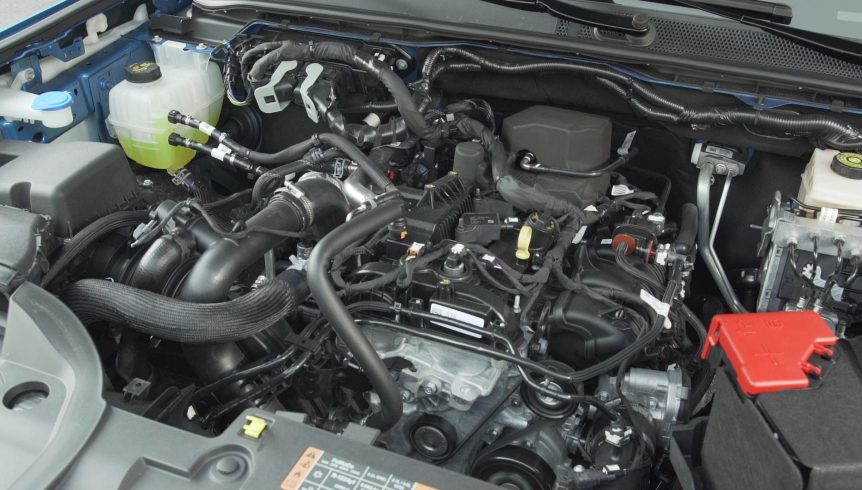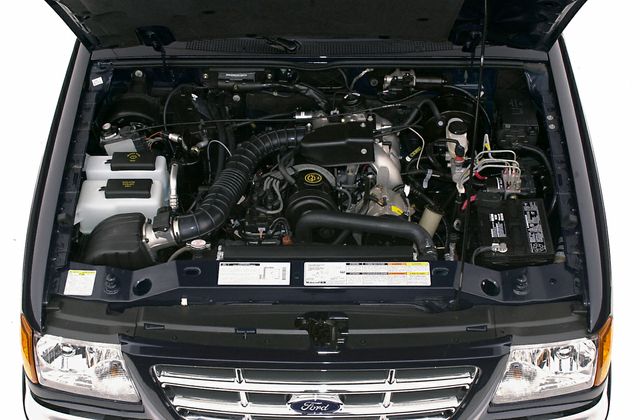The 2.2 Ford Ranger Engine: Ideal for Towing, Off-Roading, and Everyday Use
The 2.2 Ford Ranger Engine: Ideal for Towing, Off-Roading, and Everyday Use
Blog Article
Understanding the Fundamentals of Automobile Engines: Features, features, and kinds

Summary of Automobile Engines
A cars and truck engine functions as the heart of a car, transforming fuel right into mechanical power to propel it ahead. This elaborate system comprises different parts that function in unison to make sure optimum performance and efficiency. The essential procedure of a cars and truck engine involves the interior burning procedure, in which gas and air are mixed, ignited, and expelled to develop power.
The engine's style can dramatically influence its performance, gas effectiveness, and exhausts. Secret elements consist of the cyndrical tube block, pistons, crankshaft, and camshaft, each playing a critical duty in the engine's general feature.
In addition to these parts, engines frequently make use of different systems such as fuel shot, ignition, and cooling down systems to enhance efficiency and durability. Comprehending the standard technicians of cars and truck engines is essential for carrying out and identifying concerns maintenance, inevitably contributing to the vehicle's dependability and effectiveness with time.
.jpg)
Types of Automobile Engines
Cars and truck engines can be categorized into a number of types based on their design, gas type, and operational concepts. 2.2 ford ranger engine. One of the most common categories include internal burning engines (ICE), electric engines, and crossbreed engines
Interior burning engines, which can be additional divided into gas and diesel engines, operate by igniting a fuel-air blend to create power. Gas engines are typically lighter and smoother, while diesel engines are extra fuel-efficient and deal higher torque.
Electric engines use electrical energy stored in batteries to power an electrical motor, offering instant torque and zero discharges during operation. As modern technology developments, electrical automobiles (EVs) are significantly becoming prominent for their ecological benefits and reduced running prices.
Hybrid engines incorporate elements of both inner burning and electric engines, enabling flexible source of power and enhanced fuel performance. They can run in numerous settings, utilizing either the gasoline engine, the electric motor, or both at the same time.
Each type of engine has unique benefits and negative aspects, influencing their application in various vehicle kinds and market sections, from compact cars to durable trucks. Recognizing these types is crucial for making informed choices pertaining to automobile option and efficiency assumptions.
Engine Features Clarified
Recognizing engine features is essential for realizing exactly how cars run effectively. At the core of any internal combustion engine exists the basic procedure of transforming fuel right into power. This process begins with the consumption stroke, where air and gas are attracted into the combustion chamber. Following this, the compression stroke presses the air-fuel combination, boosting its temperature level and stress.
The ignition occurs next, sparking the mix and developing a rapid growth of gases. This force drives the piston down during the power stroke, which ultimately converts right into the rotational movement of the crankshaft. The exhaust stroke after that gets rid of the invested gases from the chamber, giving way for a brand-new cycle to start.
In addition to these primary features, engines additionally include systems that handle air conditioning and lubrication, guaranteeing ideal functional temperatures and minimizing rubbing in between relocating parts. This intricate interaction of features enables the engine to generate the power essential for automobile propulsion while keeping performance and integrity. Understanding these functions gives useful understanding into the complexities of automotive design and enhances the capacity to detect and attend to engine-related problems properly.
Trick Engine Features
Engine style incorporates numerous essential functions navigate here that considerably influence durability, performance, and efficiency. Among one of the most vital facets is the engine setup, which includes inline, V-type, and level layouts. Each setup influences the engine's dimension, balance, and power outcome, consequently affecting total automobile characteristics.
An additional necessary function is the engine displacement, referring to the total volume of all cyndrical tubes. Bigger variations typically yield even more power but might jeopardize gas performance. Engine materials likewise play a pivotal duty; high-strength and light-weight materials, such as aluminum and magnesium alloys, enhance performance without adding too much weight.
The type of fuel shot system used-- such as multi-port or straight shot-- impacts combustion efficiency and exhausts. Turbo charging and turbocharging are functions that boost engine efficiency forcibly added air right into the combustion chamber, enhancing power outcome without considerably enhancing engine dimension.
Last but not least, the visibility of innovative engine management systems optimizes fuel-air mixture and ignition timing, adding to smoother procedure and far better gas economic climate. Collectively, these features specify an engine's capabilities, setting the foundation for its efficiency and long life in a competitive auto landscape.
Upkeep Tips for Engines
Correct engine upkeep is crucial for making certain optimal performance and long life, as overlooking routine care can bring about substantial concerns down the line. To keep your engine efficiently, start with routine oil adjustments, typically every 3,000 to 7,500 miles, depending upon the type of oil used. Fresh oil lubes engine page parts, reducing rubbing and wear.
In addition, monitoring coolant degrees is essential to avoid overheating. Guarantee that the coolant is topped up and remains in excellent condition to keep effective temperature level law. On a regular basis check and replace air and fuel filters, as stopped up filters can impede air flow and gas shipment, jeopardizing engine efficiency.
Additionally, pay attention to ignition system and ignition systems. Malfunctioning or worn stimulate plugs can bring about misfiring and lowered performance. Examining the battery terminals and links for deterioration is also crucial, as a weak battery can influence engine beginning.

Final Thought
In summary, a detailed understanding of vehicle engines incorporates numerous kinds, functions, and key functions that substantially affect lorry efficiency. Internal burning engines, together with hybrid and electric alternatives, show varied systems for energy conversion. 2.2 ford ranger engine. Recognizing the essential features, such as consumption and exhaust cycles, together with crucial engine features like setup and fuel injection systems, furnishes vehicle proprietors with the expertise essential for effective upkeep and procedure, eventually boosting lorry longevity and efficiency
A cars and truck engine serves as the heart of a vehicle, converting fuel into mechanical power to thrust it ahead. The essential procedure of a cars and truck engine involves the internal combustion procedure, in which gas and air are blended, ignited, and expelled to develop power.
Regularly check and change air and gas filters, as clogged filters can impede air flow and gas shipment, jeopardizing engine efficiency. - 2.2 ford ranger engine
In summary, a comprehensive understanding of automobile engines incorporates different kinds, functions, and vital functions that dramatically influence automobile performance. Recognizing the necessary features, such as consumption and exhaust cycles, along with crucial engine attributes like configuration and fuel shot systems, equips auto owners with the expertise necessary for effective upkeep and procedure, ultimately boosting lorry long life and click to investigate performance.
Report this page